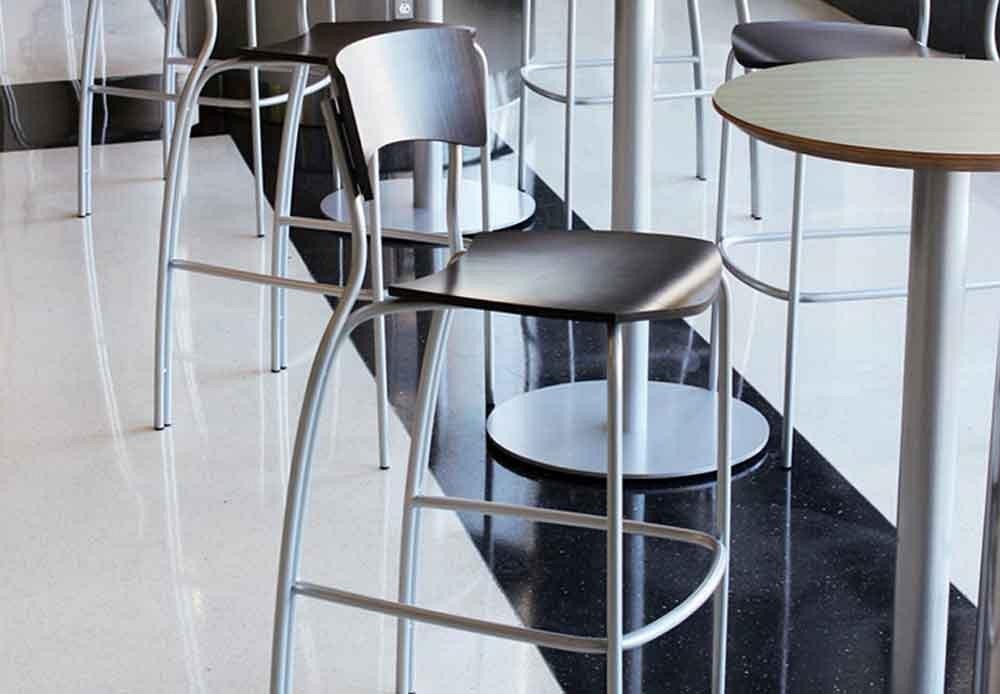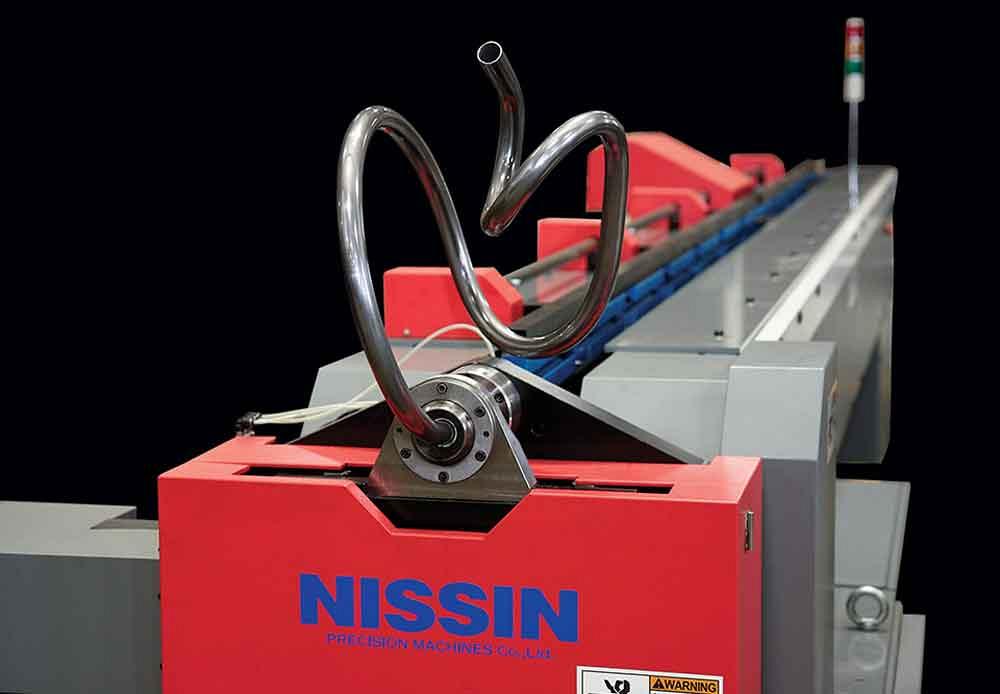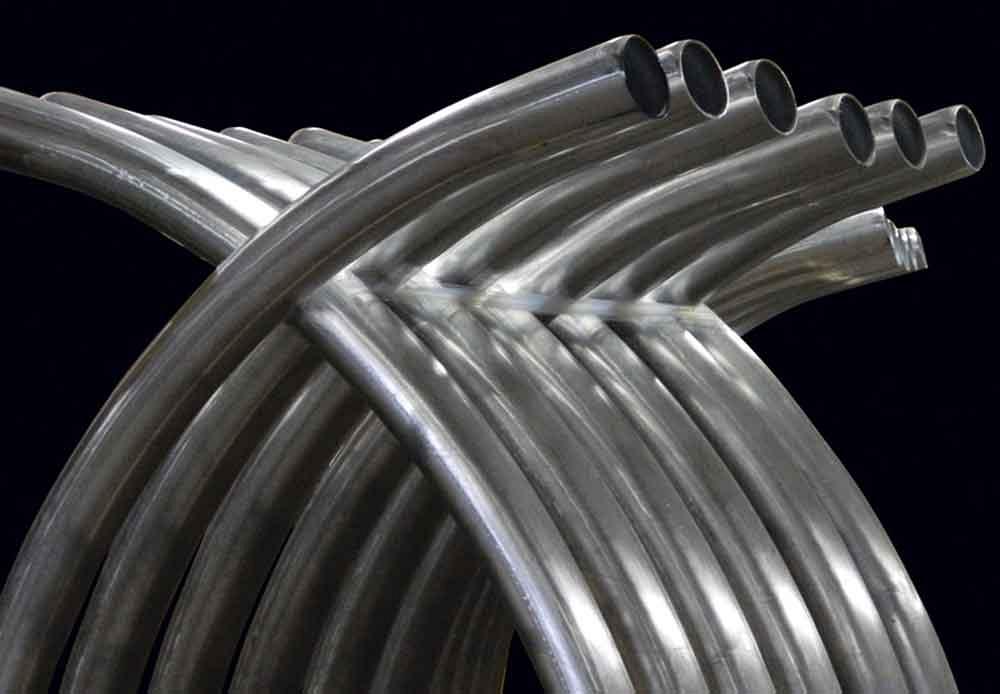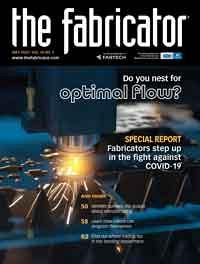President/CEO
- FMA
- The Fabricator
- FABTECH
- Canadian Metalworking
Categories
- Additive Manufacturing
- Aluminum Welding
- Arc Welding
- Assembly and Joining
- Automation and Robotics
- Bending and Forming
- Consumables
- Cutting and Weld Prep
- Electric Vehicles
- En Español
- Finishing
- Hydroforming
- Laser Cutting
- Laser Welding
- Machining
- Manufacturing Software
- Materials Handling
- Metals/Materials
- Oxyfuel Cutting
- Plasma Cutting
- Power Tools
- Punching and Other Holemaking
- Roll Forming
- Safety
- Sawing
- Shearing
- Shop Management
- Testing and Measuring
- Tube and Pipe Fabrication
- Tube and Pipe Production
- Waterjet Cutting
Industry Directory
Webcasts
Podcasts
FAB 40
Advertise
Subscribe
Account Login
Search
4 essential modes of tube bending
Freeform, compression, rotary draw, and roll bending are the most common in tube fab shops
- By Paul Krickeberg
- May 19, 2020
- Article
- Tube and Pipe Fabrication

Tube fabrication shops that use an arsenal of all four bending modes will be in an optimal position to use the best technology for each application.
Editor’s Note: This article has been adapted from the TPJTV episode “Freeform, compression, rotary draw, and roll bending.”
To have a well-rounded, fully functioning tube fabrication shop, you should know the four main modes of tube bending—freeform, compression, rotary draw, and roll bending—and which machine technologies are most suitable for which applications to help you optimize your operations.
Compression Bending
For speed and economy, fabricators often use compression bending. This bending mode is used when the roundness of the bend is not critical, and when the objective is more about high output to get the lowest price per tube.
Compression bending is used a lot in the furniture industry, to bend lawn mower handles, and for generator frames.
In addition to speed, some of the advantages are that no oil is used inside the part and that you don’t use a mandrel inside the tube, which is why the bend is a little out of round. Because you don’t use oil, no cleaning of the part is needed afterward. A lot of times cleaning the part consumes as much time as bending it.
Although furniture, lawn mower handles, and generator frames often are symmetric, a compression bender isn’t limited to symmetrical parts. You can set it up to make a 90-degree bend and a 45-degree bend, for example.
The centerline radius of the tube diameter needs to be approximately two times the diameter of the bend. For example, a 1-in. tube bend requires at least a 2-in. centerline to get acceptable bend quality.
Rotary Draw Bending
One of the most common modes of bending is rotary draw bending. It is typically used to bend a tube three to four times the centerline radius of the tube diameter.
This type of bending requires a lot more tooling than compression bending. Three pieces of tooling are needed. One, you need a bend die. It forms the tube to the specified bend. Second, you always need a clamp die. It holds the tube while you’re bending it. Third, you need a pressure die. As it’s being bent, the part naturally wants to kick out. This tool applies pressure to the back of the tube and follows along as the tube is being bent to prevent this.
If you’re bending thin-wall tube or a tight radius, you may need three other pieces of tooling. You’ll need a mandrel to go inside of it, which keeps your tube round as it is being bent. The bend radius and tube thickness determine the number of balls in the mandrel.

Compression bending is often used to bend tube when speed and economy are important but tube roundness is not. It is used predominantly for the furniture market.
In addition, a wiper die is needed to bend thin-wall tube. It prevents the tube from rippling. Normally, when you bend a piece of tube, material gathers on the inside radius, which results in a large lump or ripples at the end. The wiper die wipes, or smooths, those ripples or lumps away, pushing the metal farther from the bend.
The sixth piece of tooling you might need is a collet for when you’re making more than one bend on a part. You need the collet to be sized for the tube diameter. It holds the tube as it is bent and then pushes it forward to get it ready for the next bend.
Most rotary bending machines are oriented for right-handed or left-handed bends, but some are outfitted to bend in both directions.
Roll Bending (Angle Bending)
Another bending machine is the roll bender, also called an angle bender. This process is used when you want a large-radius bend, say eight times the tube or pipe diameter. So if you’re looking to roll a 12-in. radius or larger on a 11/2-in.-dia. tube, this is the machine that you would use. It is frequently used to roll channels and angles also.
The machine is equipped with round tooling for handling tube and pipe. It’s not expensive to tool up. You just need to have three rollers. The location of the middle roll determines the tube or pipe radius.
Freeform Bending
One of the most unique bending machines is a CNC freeform bender. It allows you to make bends of any radius and without straights between the bends.
The tube is pushed through a ceramic ring with tooling designed for the tube size. That is the only tooling needed. As the tube moves through the ceramic ring, the computer controls the motion of the ceramic ring to form the tube. It’s that simple. You can make a multibend part two days after it has been ordered without any tooling charge.
In addition to the minimal tooling requirement, very little marking occurs on the tube because the only thing touching the part is the ceramic ring. You get a mark-free part, and because no oil is used inside the tube, it does not have to be cleaned.
Paul Krickeberg is president/CEO of Sharpe Products, 2550 S. 170th St., New Berlin, WI 53151, paulk@sharpeproducts.com, sharpeproducts.com.
5 Rules of Thumb for Custom Bends
Both art and science contribute to successful results. Several tips can help make your custom bending of metal tube and pipe job a success. You will find these tips to be a helpful resource whether you’re an industry veteran or just getting started in your career.

On this freeform bending machine, a ¾-in. tube can be bent without any straights between the bends as long as the radius is three times larger (21/4-in.). Using compression or rotary bending, you would need straights between the bends. This part has four different bends without any straights between them.
1. Centerline Radius
As a rule, the tightest achievable centerline radius is one times the pipe or tube diameter. Whenever possible, choose a centerline radius of 1.5 times or greater than the tube diameter. This will save labor costs.
2. Wall Thickness
During tube and pipe bending, the wall on the outside radius can thin up to 33%, depending on the radius and other factors. You can minimize this thinning by using some of the bending tooling, such as a mandrel. This is important to keep in mind if your application involves high pressure or flow. A thicker wall may be necessary to achieve the desired results.
3. Straight Length Between Bends
Typically, a straight section between bends should be two to three times the tube diameter, depending on the radius. (An exception is using freeform bending, which does not require a straight.)
4. Tolerances
The industry standard is still considered to be ±1 degree on bend angles. A more stringent standard is ±0.5 degree. Tighter tolerances, even to ±-0.2 degree, can be accomplished with laser-controlled springback technology if the application requires it. Lineal tolerances normally are ±0.062 in. or tighter. The industry standard for ovality is 8% to 4%. This can be improved upon if the application calls for it.
5. Drawings
It’s important that part drawings include the pipe or tube specs, material type, centerline radius, and any other details about the scope of the project. If available, STEP files or 3D models can be uploaded along with your drawing.
About the Author
subscribe now

The Fabricator is North America's leading magazine for the metal forming and fabricating industry. The magazine delivers the news, technical articles, and case histories that enable fabricators to do their jobs more efficiently. The Fabricator has served the industry since 1970.
start your free subscription- Stay connected from anywhere

Easily access valuable industry resources now with full access to the digital edition of The Fabricator.

Easily access valuable industry resources now with full access to the digital edition of The Welder.

Easily access valuable industry resources now with full access to the digital edition of The Tube and Pipe Journal.
- Podcasting
- Podcast:
- The Fabricator Podcast
- Published:
- 04/16/2024
- Running Time:
- 63:29
In this episode of The Fabricator Podcast, Caleb Chamberlain, co-founder and CEO of OSH Cut, discusses his company’s...
- Industry Events
16th Annual Safety Conference
- April 30 - May 1, 2024
- Elgin,
Pipe and Tube Conference
- May 21 - 22, 2024
- Omaha, NE
World-Class Roll Forming Workshop
- June 5 - 6, 2024
- Louisville, KY
Advanced Laser Application Workshop
- June 25 - 27, 2024
- Novi, MI
































